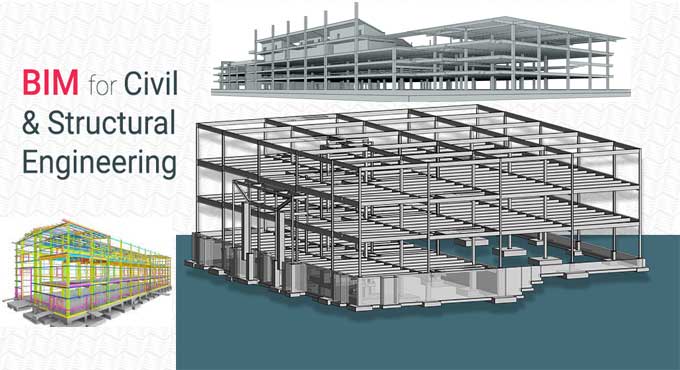The Importance & Impact of BIM for Structural Engineers in Different Job Roles
Tweet
There is a special place in the construction industry for structural engineers. These highly skilled team members move between the office and the job site creatively and practically. Nearly every member of the construction team is impacted by their decisions. They lend their expertise to a variety of projects.
Safety Experts
It is arguably one of the most important aspects of a structural engineer's job. Structural engineers conduct safety audits and inspections every day, whether it's assessing a construction project or inspecting an existing building for reported structural issues. A complex inspection should record and action regardless of its complexity.
BIM allows users to access it through any computer log on to sites. Building regulations comply with predefined templates. Furthermore, they can be customized for specific site irregularities and client needs.
Construction Audit
Using this new audit template for future projects can be easily adapted and saved for future use. Once the audit is completed, it is automatically backed up in the cloud and stored in the site project, ready to be integrated into site reports upon handover. A major advantage of this tool is that it makes it easy to take action on any concerns found in the report.
Construction workers or specialists can be assigned these tasks, along with deadlines. Dashboards allow you to keep track of all actions at a glance. In addition to automating logging, site diaries can also be compiled easily every day.
Designers
Software plays an important part in supporting the first element of structural engineering. There are many design tools AutoCAD and RISA general 3D design software, as well as STAAD.Pro structural analysis software and a variety of niche and structure specific tools. As BIM models become more popular, they are becoming more and more popular.
Government projects have become increasingly dependent on 3D modeling software, and private projects of all sizes are increasingly requesting it.
Problem Solver
Often, structural engineers are forced to deal with unforeseeable problems. The structural engineering profession contributes to building structures that last longer, require less maintenance, and have a lower environmental impact by understanding materials and their properties.
Through BIM, users can view a single source of truth for all components of a construction project, manage audits completed by structural engineers, and transmit the results of those actions to construction teams. In addition to voice notes, images, and voice recordings, defects can also be logged along with their location on the digital plan.
Communications
Communicating with other team members is a key to creating sustainable structures. Structure engineers will have daily contact with architects, designers, site managers, and health and safety officers, so collaboration is essential. The necessary actions can be viewed on smart phones by construction teams. In addition, push notifications provide information on the progress of the task.
Project Handover
Handover of the project is the ultimate solution to any problem. Reporting is easy with BIM's easy templates and automatic data collection.
It is possible for updates to be provided as the project progresses, and collated into a comprehensive report to be provided at the end of the project based on the BIM model.
To get online demonstration, watch the following video tutorial.
Video Source: Pinnacle Infotech
Reporting templates, like audits, allow complete customization of content and branding.
BIM for Engineers: Structural Design Services
It allows all team members to be informed and opens issues to be tracked by all team members. Therefore, it will be impossible to discover any nasty surprises at the end of the project.

Gallery
Feel free to contact us for BIM requirements. One of our representative will respond you within 24 Hours. Send us your projects requirement today and grow your project.
Explore More !







